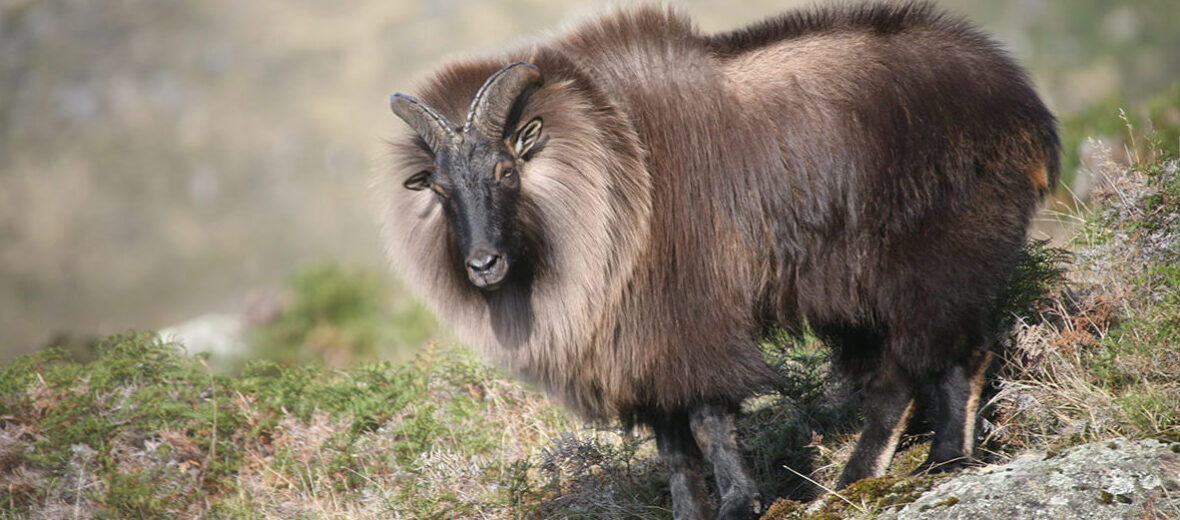
Enter the Himalayan tahr, a large wild goat that lives its life around the mountain forests, mountain slopes, and also the alpine pastures on the Himalayas in India, Nepal, and Tibet. These big goats have also been introduced to North America, New Zealand, and South Africa for the sole purpose of hunting. They are listed as Near Threatened by the IUCN. This is due to habitat loss, illegal hunting, competition for food with domestic livestock, and climate change.
First the Stats…
Scientific name: Hemitragus jemlahicus
Weight: Up to 189 lbs.
Length: Up to 4.7 feet
Height: Up to 3.5 feet (at the shoulder)
Lifespan: Up to 22 years
Now on to the Facts!
1.) These critters are superb climbers as they have evolved well-developed hooves with rubbery cores and sharp rims. The softer cores allow them to climb steep cliffs while the sharp rims help them dig into small cracks and crevices.
2.) Tahrs are gregarious and live in all male and all female herds, up to 80 strong.
3.) Their horns can get up to 18 inches long.
4.) The tahr engage in altitude movements. This is where they will move to lower elevations, at night, to reach food and water. Where, during the day, they will climb to higher elevations for safety from predators and to rest.
5.) They graze on grasses, leaves, herbs, and certain fruits.
But wait, there’s more on the Himalayan tahr!
6.) Tahrs are polygynous (1 male mates with numerous females).
7.) The breeding season typically occurs from late October – January.
Did you know…?
Their hooves have evolved the special ability to grasp both rough and smooth surfaces that are found throughout their mountainous regions.
8.) Males will enter into a rut to fight for breeding rights. During the rut they will ram their horns together, making a loud clack sound. Special fluid around the brain helps to prevent brain injuries.
9.) These critters are diurnal (active during the day).
10.) Females birth 1 kid after up to a 242 day gestation (pregnancy).
Now a Short Himalayan Tahr Video!
Be sure to share & comment below! Also, check out the Critter Science YouTube channel. Videos added frequently!
Want to suggest a critter for me to write about? Let me know here.



